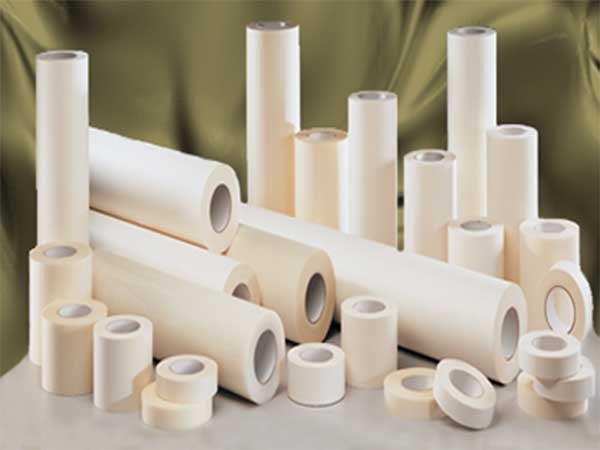Application Tape: The Unsung Hero in Professional Sign Making

In the wide-ranging field of professional sign making, attention is often lavished on the selection of materials for the sign itself, whether they be vinyl, acrylic, or digital prints. However, an element that is crucial yet frequently overlooked is the application tape. This component plays a pivotal role in the creation process, acting as a bridge between the print and its final destination.
Understanding Application Tape
Application tape, also known as transfer tape, is a product used to pick up vinyl lettering and designs from their backing material and transfer them onto the final substrate. The tape temporarily holds the cut vinyl graphics in place, enabling it to maintain perfect alignment and spacing during the transfer.
The adhesive on the tape is specifically engineered to be less sticky than the vinyl itself, which allows for a clean removal after the vinyl is adhered to the desired surface. This aspect of sign making might not grab the headlines but mastering its use is essential for any signage professional.
The Varieties of Application Tape
Professional sign makers are aware that not all application tapes are created equal. They come in a variety of widths, levels of tack, and types of backing paper or film, to align with different project needs. Some tapes have a light adhesive for easy releases, while others have a stronger grip necessary for heavier or textured vinyls.
The choice of application tape will depend largely on the detail of the graphics and the type of vinyl used. Highly detailed or small graphics usually require a tape with a stronger adhesive to successfully lift and move the design without losing elements.
Application Tape in Sign Making
In the process of sign making, the selection of the tape is just as important as the selection of the vinyl or substrate. Once a sign has been designed and cut, the application tape is applied over the top of the vinyl’s graphic side. It’s used to protect the vinyl graphics during storage and transport and can also be reused in multiple applications if the quality permits.
Application tape is not a one-size-fits-all product, and professional sign makers need to consider factors such as the environment in which the sign will be installed, the type of vinyl used, and the intricacy of the design when choosing their tape.
Application and Removal Techniques
One key aspect to achieving a polished and professional finish to any sign is the technique of tape application and removal. After placing the tape over the vinyl, it is important to eliminate any air bubbles to ensure a secure grasp of the graphics. Sign makers usually use a squeegee to smooth out the tape from the centre to the edges.
When transferring the vinyl to its final surface, careful handling and the right angle of removal are necessary to prevent any stretching or misshaping of the design. Once the vinyl is in place, the tape is gently peeled away, revealing the immaculate signage underneath.
Why Application Tape Matters
Though often underestimated, application tape is a linchpin in sign making. A poor choice in tape can lead to lifted edges, misaligned graphics, or even complete project failure. The right tape ensures that the final product is professional, clean, and exactly as designed.
Additionally, beyond the actual application, the tape serves secondary purposes in protecting the graphics during transport and aiding in the proper alignment during installation. Considering these factors, application tape deserves recognition for its role in the seamless creation of professional signage.
Final Words on the Application Tape’s Role
As we delve into the intricacies of sign making, it becomes clear that application tape is an essential ingredient in the recipe for signage success. Its utilitarian role might deprive it of the spotlight, yet without it, the beauty and precision of signage cannot be realised.
Thanks to its versatility and importance, this unsung hero deserves its due recognition. Whether you’re a seasoned professional or a hobbyist in the world of sign making, understanding and mastering the use of application tape will surely enhance the quality and efficiency of your work.
In conclusion, sign makers know that the right tools make all the difference—and in the realm of tools, application tape stands out as a fundamental asset. It represents the meticulousness and attention to detail that sign making demands. Without a shadow of a doubt, application tape is the silent partner in the art of sign crafting, an ally that holds designs together, quite literally, until they reach their final show-stopping destination.
It’s this integral background role that makes application tape the unsung hero of professional sign making—a component as crucial as any other, if not more so, in crafting clear, compelling, and consistent signage for every imaginable application.
Experience in the field reinforces the reality that no sign maker’s toolkit is complete without a reliable supply of application tape. Its application serves as one of the last steps before a sign makes its public debut, the final check to ensure that every detail is in its rightful place. It stands at the intersection of creation and presentation, facilitating the transfer from vision to reality.
Therefore, when considering the elements that contribute to successful sign making, do not overlook the critical role of application tape. As the unsung hero, it ensures that the first impression of any sign is flawless, and that the message it bears is communicated with the quality and professionalism it deserves.




